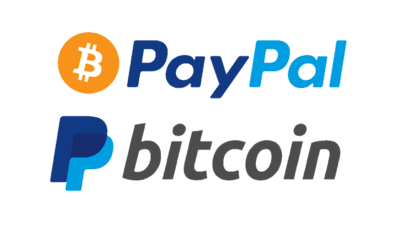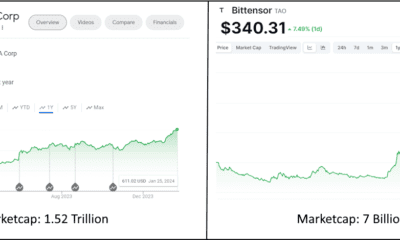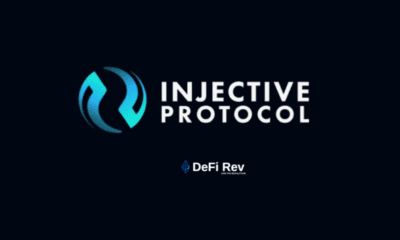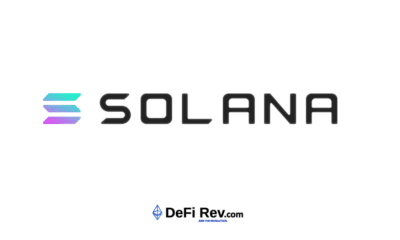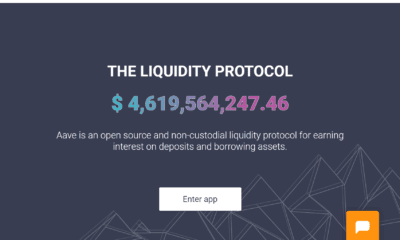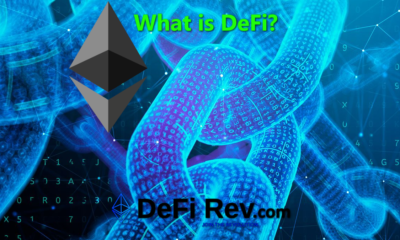trading
The Ultimate Guide to DeFi Lending in 2020
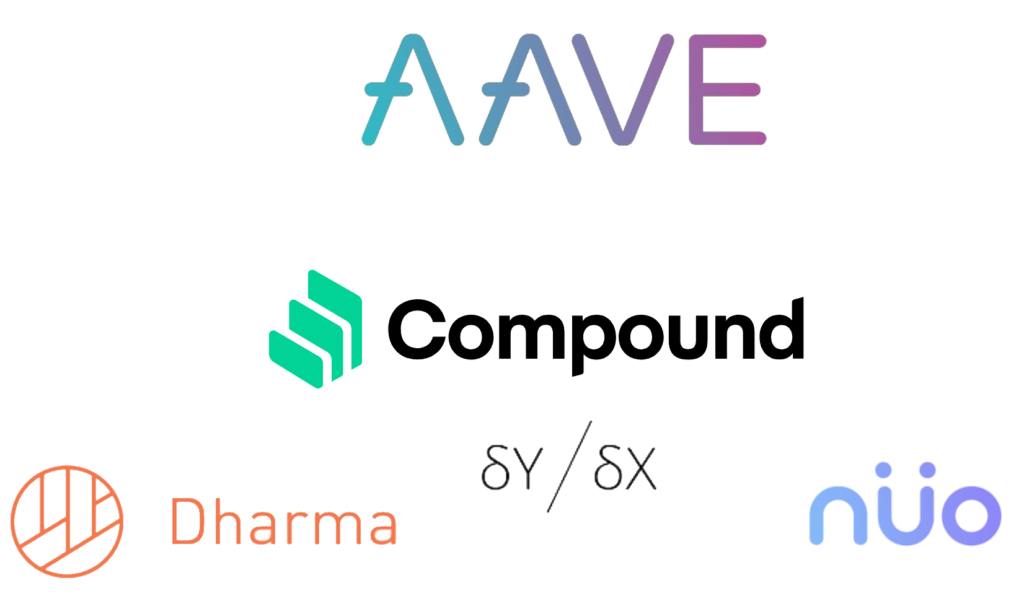
The spark of Defi Lending
Growing speculation and a new shift in attitudes towards financial markets has catapulted interest in DeFi lending. This is not just a trend but a long-term disruption in the lending market due to the substantial interest rate arbitrage available driving the acceleration of its growth.
DeFi lending functions a bit similar to the traditional crowdlending P2P services, but there is a core difference. In DeFi the loans are issued on decentralized platforms that lock up cryptocurrencies through smart contracts on public blockchains. It lets users supply cryptocurrencies in return for a year-on-year return. DeFi lending reduces the burden of paperwork because it uses smart-contracts. This is an on-demand service with the principle of quid pro quo where one party interacts with the other and the blockchain is a transparent conciliator that records the operation and fulfills the terms of contracts.
The unique features about DeFi lending are:
- It is permissionless meaning that anyone has the leeway to lend their assets at the barest minimum cost
- The selected lending protocols are audited meticulously. The code backup for lending contract funds is robust and uncompromising implying that security is taken extremely seriously.
- Most of the DeFi lending protocols do not expect their users to transfer ownership of their inherent assets. They do not need any approval from a third-party.
- The interest earned from lending is collated axiomatically which means that from the end-user side, there is very little maintenance work to be done to earn passive income.
- Self-administered interest rates rule the roost as interest rate fluctuations are a direct measure of supply and demand changes
What are DeFi lending protocols
Decentralized Finance is implementing financial instruments in the form of smart contracts on Decentralized blockchain networks. Decentralized is one such financial service that aims to democratize the ability to get loans. The DeFi lending protocol ecosystem has seen humongous growth over the years. Among the several reasons why DeFi lending protocols are a must, there are 3 very strong reasons to go for it.
- For a long-term crypto holder who is not interested in selling their crypto investment yet, but still has a list of bills that need to be paid, taking a loan on their crypto will help the holder pay for his/her daily expenses.
- We know that leveraged trade is executed with borrowed money; the margin is that collateral which is used to make the leveraged trade. This magnifies the investor loss or gains made on the trade.
- Lending protocols helps traditional crypto holders to earn interest higher than traditional savings

The most popular ones that are high on popularity, security and ease-of-operation are:
Most of the DeFi lending protocols can be accessed with a Web3 wallet like Metamask. Users have to source their wallet with a small amount of ETH to pay for the transactions with the capital they wish to supply. No same lending protocol has a similar risk. Our top picks are safe to lend with very little chance that your funds are compromised through any unforeseen attack.
What makes DeFi lending tempting?

A comparison of DeFi lending with heritage lending
- On one hand DeFi majorly circles around the lending of Ethereum based currencies, traditional markets focus on fiat currency. DeFi lending platforms use smart contracts to interact with currencies making them embrace ERC-20 tokens widely. Some of the most popular coins on DeFi lending platforms are DAI and USDC as they are smart breeding grounds for rapid smart-contract interactions.
- DeFi lending is permissionless meaning that the loans are hugely overcollateralized compensating for the loss of capital owing to any reason. If it is undercollateralized, immediate liquidation occurs and it is sold-off in the open-market to make sure protocol is collateralized back to what it should be. In the legacy lending platforms, loans are usually either undercollateralized or with tangible goods to avoid the case of bad debts and recovery.
- Mostly all of us at some point in time, take loans. It usually requires a process that one needs to undergo to ensure that the loan is sanctioned. That includes verification of income, the credit scores, the collaterals in question and so one and there is no sure shot way of saying that you will get what you want. But with DeFi lending there is no cap on the amount of capital required. Interest also can be collected at any moment. All you need is great network connectivity.
Most popular cryptos used in DeFi Lending
Currently, we have listed 3 hottest cryptocurrencies that are hot on DeFi lending platforms
DAI

Considered as a game-changer for the entire cryptocurrency ecosystem. It is a decentralized cryptocurrency that is stabilized against the value of the US dollar. It uses margin trading to react to changing market conditions and ultimately preserves its value heads-up against the major currencies dominating the world. Compared to other stablecoins that take the support of USD, this is backed by crypto collaterals which can be seen publicly on the Ethereum blockchain.
USDC

USD coins are pegged to USD and tokenize USD to facilitate its use over public blockchains. It can be changed back to USD anytime. With the help of ERC-20 smart contracts, issuing and redeeming USDC tokens are executed seamlessly.
Ether

Ether – the cryptocurrency of the Ethereum network is one of the most popular tokens that are decentralized making use of distributed ledger technology. It has competitive lending rates and most of the lending protocols support ETH lending as it owns the market with the second highest market cap.
Advantages of DeFi lending
Lending with Blockchain technology involved makes the offerings not just transparent but also cheaper and faster to borrowers and lenders. Leveraging on blockchain technologies with peer-to-peer lending offers several advantages.
No paperwork
There is no need for any paperwork or a bank account while you decide to choose a crypto-backed loan. For those individuals who are unbanked and at the lowest level of the financial pyramid and those who cannot provide KYC, this feature will certainly bring cheers.
Insignificant transaction fee
Under the lending process, when the borrower puts in the loan request, it goes to a financial institution like a bank that charges you additional fees for documentation, early payment, and whatnot. The fee in question usually adds up to considerable amounts. But on the other hand, crypto-backed loans do not carry the burden of any processing or transaction charges. Compared to P2P loans, crypto-backed loans are more value for money.
Defying boundaries
In conventional P2P lending, the major barrier is the geographical boundaries but DeFi lending opens the door to cross-border lending. This is a win-win situation for borrowers and lenders because it offers diversification. With crypto-backed loans, lenders can diversify their portfolio defying boundaries to take advantage of variegation. Borrowers also get access to a large pool of lenders who are spread globally.

The Future of DeFi Lending
DeFi lending, and lending protocols have a long way to go in terms of building infrastructures to truly support the vision, but in 2020 we are already off to a phenomenal start. In order to build DeFi lending architecture, user experience, security audits, and user education are essential.
There is enormous potential for DeFi lending to flourish because of its groundbreaking innovation, yet the future of DeFi lending is up to the efforts of the builders in developing and educating others.
It’s in all of our hands.
Check back in at DeFiRev.com to find out the latest in DeFi News.
Thanks for reading this article!
trading
Pump.fun coin founders raise $1.32 billion

Pump.fun coin founders rake in billions
Pump.fun’s latest growth streak began with the conclusion of its public sale on July 12th, which brought in $1.32 billion across private and public rounds. The public portion alone, priced at $0.004 per token, raised $600 million in just 12 minutes. This was followed by the launch of $PUMP trading, with tokens distributed and markets opening within days, making it one of the largest crypto fundraises in recent years.
Following this, the team introduced a creator-fee redirection feature for projects hosted on PumpSwap or still within the bonding curve. This update allowed fees to be reassigned to active community leads in cases of leadership changes, provided there was a clear and verified request.
Pump.fun has also rolled out a public revenue dashboard, giving the community full visibility into daily platform earnings. Over a six-day period, the team bought back 8,740 SOL worth of $PUMP, exceeding the revenue generated during that time. In their words, it was about “putting our money where our mouth is” when it comes to reinvesting in the ecosystem.
Most recently, Pump.fun launched the Glass Full Foundation (GFF), a funding program for standout communities within its ecosystem, which are often called “diehard cults” internally. As part of this launch, the team has already awarded initial grants, with more recipients expected as the program scales.
From record-breaking fundraising to ecosystem reinvestment and targeted community funding, Pump.fun has spent the past several weeks strengthening its position as a leading Solana-based memecoin launchpad.
Go back to DeFiRev.com HOME
Go to Market Watch
trading
Bittensor booms as Chip Mania hits Stock Market: The AI Race and the Potential of TAO
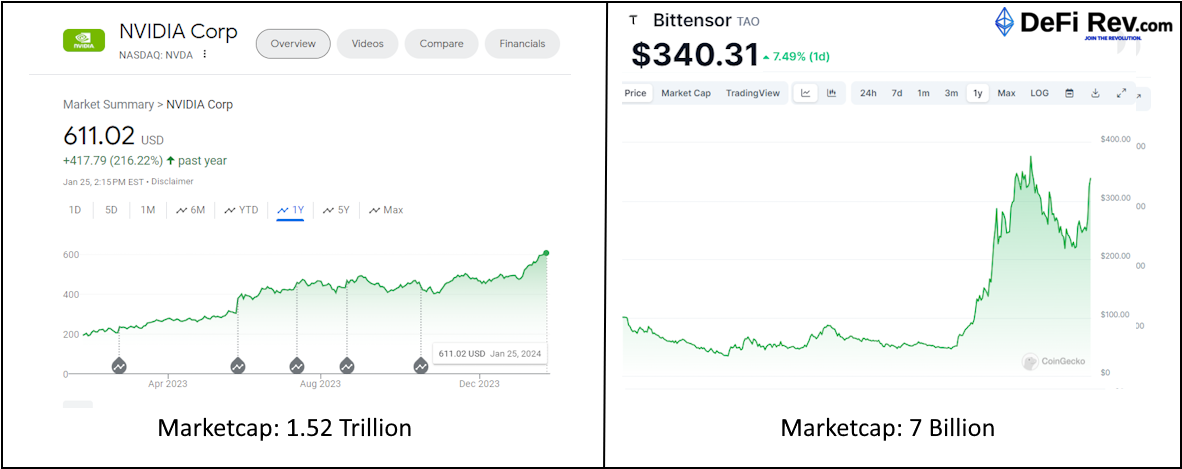
The stock market has been abuzz with the latest trend in technology investments: semiconductor chips. This “chip mania” is fueled by the global race for artificial intelligence (AI) supremacy, as chips are the fundamental building blocks of AI and machine learning technologies. As companies and countries vie for the lead in AI, the demand for advanced semiconductor chips has skyrocketed, leading to significant interest from investors. In this context, Bittensor, with its unique decentralized approach to AI, emerges as a potentially strategic investment.
Nvidia and Bittensor might seem quite different at first glance—one is a big name in computer graphics, and the other is part of the exciting world of decentralized networks. But they actually have a lot in common, especially when it comes to artificial intelligence .
The AI Race and Chip Demand
AI has become a critical component of modern technology, from consumer applications like voice assistants to complex systems such as autonomous vehicles and smart cities. The performance of AI systems is heavily dependent on the processing power provided by semiconductor chips. As AI models become more sophisticated, they require more computational resources, driving the demand for high-performance chips.
This demand has led to a surge in investments in chip manufacturers and designers. Companies like NVIDIA, AMD, and Intel have seen their stock prices soar as they continue to push the boundaries of chip performance. The market has also witnessed the rise of specialized AI chip startups, all competing to create the most efficient and powerful processors.

Supply Chain Challenges and Investment Opportunities
The increased demand for chips has not been without its challenges. The global semiconductor supply chain has been under strain, with issues such as the COVID-19 pandemic, trade tensions, and production bottlenecks leading to shortages. These shortages have highlighted the critical nature of chips in the global economy and have spurred further investment as companies seek to secure their supply chains.
Investors are keenly aware of the strategic importance of semiconductors and are looking for opportunities to capitalize on the chip mania. This has led to a bullish outlook on chip stocks, with many analysts predicting continued growth as the AI race heats up. This also has led to a boon from smart money to look into Bittensor.
Bittensor: A Decentralized Approach to AI
Nvidia and Bittensor might seem quite different at first glance—one is a big name in computer graphics, and the other is part of the exciting world of decentralized networks. But they actually have a lot in common, especially when it comes to artificial intelligence (AI). Let’s break down how they’re both helping to push technology forward:
Nvidia makes the powerful graphics cards that a lot of AI programs need to run. Bittensor, on the other hand, gives people a place to run AI programs on a network that’s spread out across many computers. Nvidia is always coming up with new ideas for its graphics technology, which is super important for video games, AI, and big calculations. Bittensor is also all about new ideas, but it’s focused on making AI services that don’t rely on just one place or computer.
Nvidia has a huge group of developers who use its tech to create all sorts of things, and it helps them out with special software and tools. Bittensor also depends on a community, but it’s made up of developers and people who contribute computer power to the network, and they get rewarded with digital tokens.
Both Nvidia and Bittensor have lots of room to grow, but in different ways. Nvidia is growing because more and more industries need its graphics cards. Bittensor’s growth is tied to how many people start using decentralized AI services and how the whole area of digital currencies and blockchain technology gets bigger.
Now, let’s imagine it’s two years from now, and Bittensor has really taken off. Here’s what that could look like:
Everyone’s Using Decentralized AI
Bittensor’s network is the go-to place for AI services that aren’t tied to one spot. There’s a big group of smart people and companies using and adding to the network.
Even small companies or solo developers can make cool AI stuff because Bittensor makes it easy to get to machine learning tools and computer power.

Amidst the frenzy for traditional chip stocks, Bittensor presents a novel investment opportunity. Bittensor is not a chip manufacturer; rather, it is a decentralized network that leverages the collective power of distributed machine-learning models. By pooling together the resources of miners across the globe, Bittensor facilitates the creation and operation of AI models in a decentralized manner.
The Bittensor network offers several advantages to Nvidia that could make it an attractive investment:
The Bittensor network offers several advantages that could make it a competitor to Nvidia.
Decentralization: Unlike centralized AI services, Bittensor is not reliant on a single entity or data center. This reduces the risk of outages and censorship, potentially leading to a more robust and resilient AI network.
Incentivization
Miners on the Bittensor network are rewarded for contributing computational resources and for the performance of their AI models. This creates a marketplace for AI services where competition drives innovation and efficiency.
Scalability
As the demand for AI grows, Bittensor’s decentralized model allows for easy scaling by simply adding more miners to the network. This contrasts with the physical limitations and capital expenditures required to scale traditional data centers.
Accessibility
Bittensor democratizes access to AI by allowing anyone with computational resources to participate as a miner. This could lead to a more diverse and widespread development of AI applications.
The chip mania in the stock market is a reflection of the critical role that semiconductors play in the burgeoning AI industry. While traditional chip stocks are an obvious choice for investors looking to capitalize on this trend, Bittensor offers a unique angle. Its decentralized network aligns with the principles of blockchain and the growing interest in distributed systems.
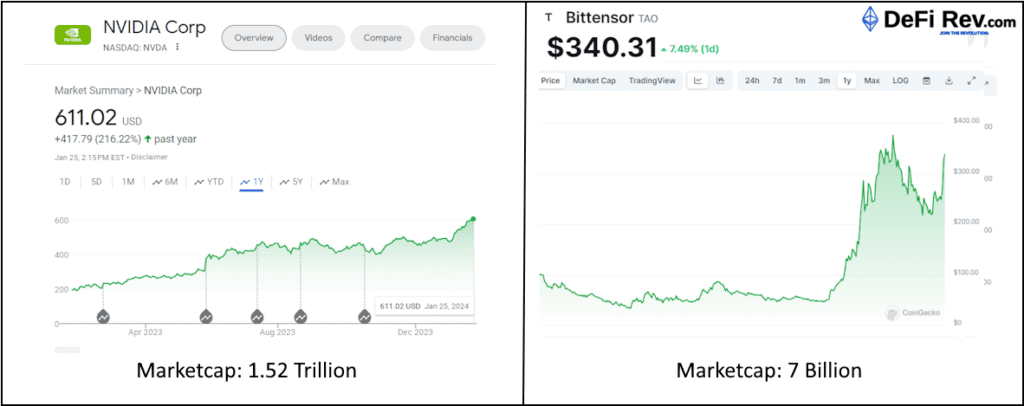
trading
AAVE CRYPTO ASSET SOARING
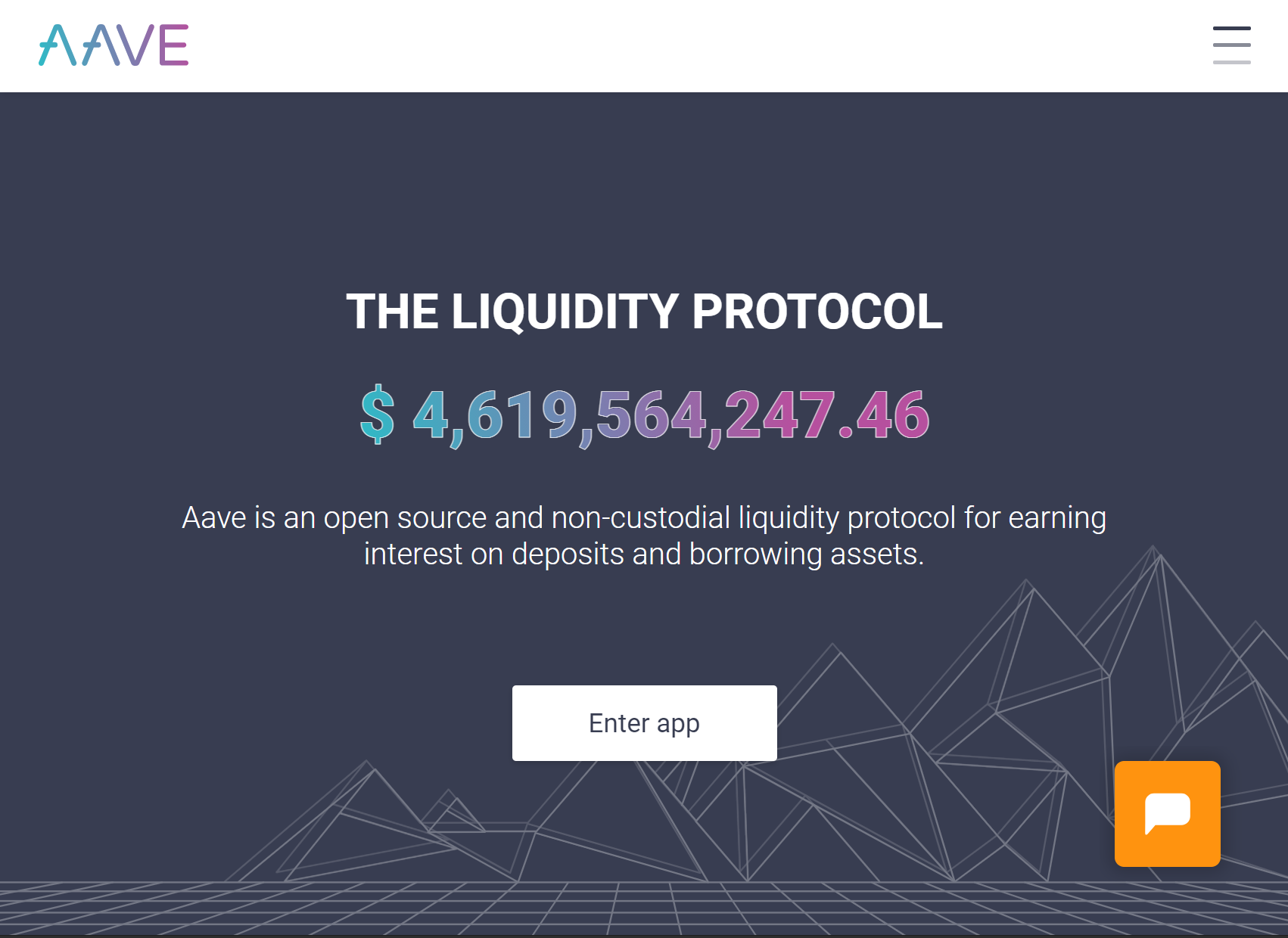

AAVE SOARING TO NEW HEIGHTS AS IT BREAKS $500 USD
AAVE is on fire reaching new all-time highs in rapid succession. As of today, February 4th, 2021, an earth-shattering volume of nearly 3 billion dollars of AAVE was traded in the past 24 hours.
Aave clocks in a new ATH ever since the v2 migration tool launch
Aave (AAVE) has been going strong ever since February began. In just 5 days, AAVE has increased by 76% and today the token hit a new all-time high of $520. The protocol to date has successfully captured users and has done well against its competition. The latest rally for Aave started on Jan 28 when the protocol announced the v2 migration tool. The tool allowed users to easily migrate all account information including the borrowed positions and staked tokens.
The new tool also facilitates easy migration of user information to the updated protocol. Recently on the 1’st of February, the team from Aave protocol posted an update about the same:
“Today is the last day to vote on the AIP to add $BAL on Aave V2.”
A day following the announcement the proposal was passed by the community. The Balancer (BAL) was added on Aave 2 and it was around that time that AAVE rallied from $284 to $300.
The DeFi platform of AAVE is also rejoicing since the platform is undergoing immense upgrades. As per DeFi pulse, the total value locked in the DeFi protocol is now at $4.96 billion ranked second after Maker which has $5.16 billion in total value locked.
AAVE, which is the 15th largest coin in terms of market cap, also recorded a staggering 24-hour trading period. Its trading volume in the last 24-hours touched $2.4 billion! Treyce Dahlem who is a research analyst believes that the recent surge in AAVE price has been fuelled by the big players and institutions who are becoming increasingly interested in DeFi.
He added, “Billionaire Mark Cuban recently spoke about the “unlimited upside” of DeFi and according to a snapshot of his on-chain portfolio, he is an AAVE whale holding more than $150,000 worth of the token. Grayscale recently filed more than a dozen altcoin trusts with Delaware’s corporate registry, one of those altcoins being AAVE. Additionally, Bitwise added AAVE to their Bitwise 10 Large Cap Crypto Index. These announcements have caused investor sentiment to reach a new YTD high of 83.5 (very high).”

AAVE is quickly becoming a household name in DeFi for its revolutionary approach to decentralized lending, and our analysts believe that with the stellar leadership of Stani Kulechov, the Founder and CEO of AAVE, we predict AAVE will move into the top 10 digital assets quite quickly.
It seems apparent that AAVE is the de facto industry leader in its sector, and we surmise that it will be the perfect way for the everyday individual to get their feet wet with DeFi.
Recently, the migration tool from V1 to V2 was made available.
-

 news2 years ago
news2 years agoPayPal Crypto Bound! PayPal is betting on bitcoin and DeFi in a BIG way.
-

 trading2 years ago
trading2 years agoBittensor booms as Chip Mania hits Stock Market: The AI Race and the Potential of TAO
-

 trading2 years ago
trading2 years agoInjective Protocol, the new Binance IEO, packs a punch
-

 trading2 years ago
trading2 years agoUniSwap Heating up BIG TIME! Is this the end of IEOs? New DeFi Projects fundraising on Uniswap.
-

 interviews2 years ago
interviews2 years agoBobby Ong CoinGecko CEO: Interview with the Trailblazing Entrepreneur
-

 trading5 years ago
trading5 years agoWhat is Solana? How SOL is aiming to solve scaling issues.
-

 trading2 years ago
trading2 years agoAAVE CRYPTO ASSET SOARING
-

 news2 years ago
news2 years agoDecentralized Finance explained. What is DeFi?

